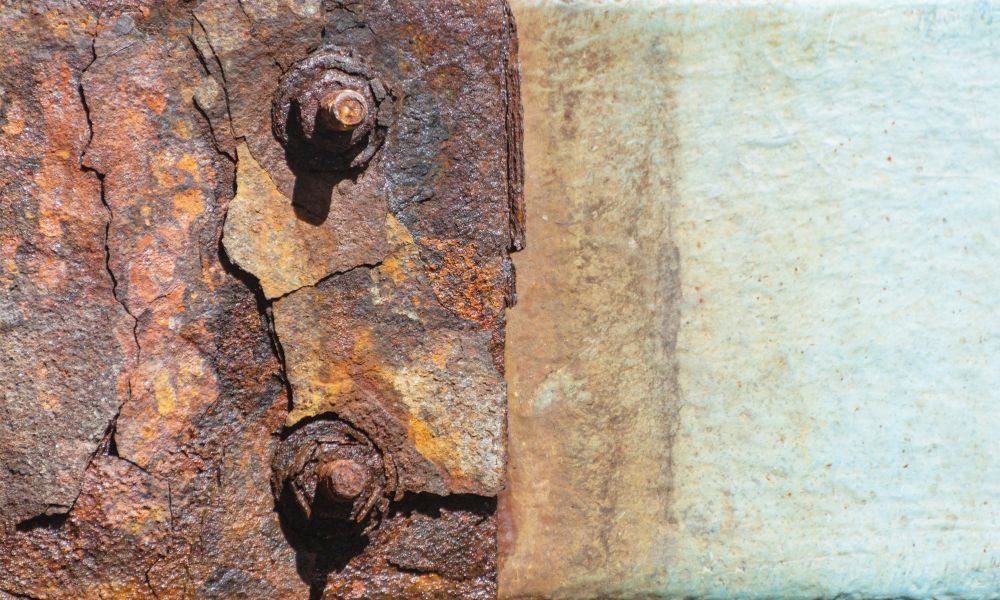Corrosion is one of the worst things that can happen to a commercial building, whether it’s impacting electronics, structural supports, or the roof. Aside from the safety concerns of a rusting building, corrosion is also an expensive issue that requires significant repairs. Read on to learn more about the basics of rust and why it’s dangerous for infrastructure.
What Is Rust?
Time for a quick science lesson! Rust, or iron oxidation (III), is the result of iron reacting to water and oxygen. Metal surfaces that are exposed to these chemical compounds will deteriorate over time, leaving behind reddish-brown flakes. Ultimately, rust is the byproduct of poorly protected, exposed infrastructure.
There are many different types of oxidation, and each kind produces a unique color depending on what molecules oxidize the metal. For instance, sulfur found in acid rain can create yellow oxides. Additionally, not all metals “rust” like iron. Silver oxidation caused by hydrogen sulfide is known as tarnish, and copper oxidation caused by oxygen and water is known as patina.
The Dangers of Rusting Infrastructure
Now that we fully understand rust, it’s important to learn why corrosion is so dangerous for your infrastructure. Rust threatens the safety and well-being of both people in the structures and the structures themselves, whether it’s present on pipelines in the sewer, support beams for a bridge, or electronic devices and equipment found throughout a commercial building,.
Allowing rust to develop over time can lead to foundational problems for your facility that might even result in a collapse! And corroded electronics are more likely to malfunction and cause an electrical fire. Rusted pipes put potable water supplies in danger of getting contaminated. Ultimately, corrosion will destroy any structure in its path, so you must deal with it swiftly.
Prevention and Solutions
While you can’t completely eliminate corrosion, there are ways to slow down the progression of rust and mitigate its impact on your infrastructure. Applying protective linings and coatings on exposed metals is a simple method for preventing oxygen and water exposure.
Additionally, purchasing structures and electrical devices made with corrosion-resistant materials is a smart investment that will limit the frequency of infrastructure maintenance. Lastly, consider scheduling a cathodic inspection if you suspect your infrastructure is oxidizing. Prepare for the inspection ahead of time to ensure a smoother and more successful process.
Understanding the basics of rust and why it’s dangerous for infrastructure can help you protect your business and the general public from hazardous environments and structures. When in doubt, consult with professional services to ensure your infrastructure is protected.






